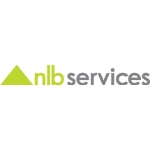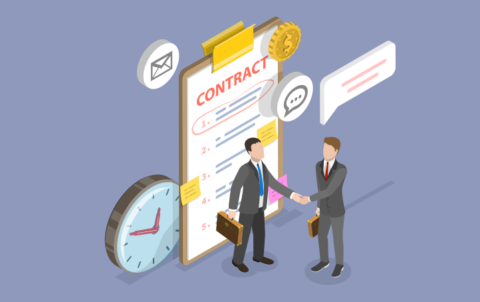© 2025 Next Level Business Services Inc. All Rights Reserved.
15 Employee Retention Strategies You Can Use
By NLB Services
Take your employee experience from better to best
Employees stay in a company for many years by loving their work or the work culture they get and feel they’re exactly where they’re meant to be. On the other hand, some leave and pursue other opportunities they like.
Whatever the case for your business, as a company, you likely want to retain all of your employees, whether they’ve been with you for two years or ten or have just started.
Let’s understand what employee retention is and how to discover high-impact strategies that will help in employee retention, satisfy your employees and keep them with you for a long time.
What is Employee Retention?
Employee retention is the company’s ability or strategies to keep employees and reduce employee turnover when they leave their jobs for other job opportunities or reasons.
Employee retention directly impacts business success, as having skilled and experienced employees makes it easier to reach business goals.
Why does employee retention matter to every company?
Organizations may apply various employee retention techniques to retain skilled employees and understand how they fare in retaining employees. Also, whether there’s any need for improvements in the existing employee retention strategies.
If your analysis tells you that you have lower retention, your business is likely to spend more money on hiring new employees than on helping existing employees succeed. The cost of replacing employees can range from .5x to 2x an employee’s annual salary.
Employee retention helps to promote the health and success of the organization. The time, stress, and cost of hiring and training new employees are essential, and turnover can impact business outcomes. High employee turnover brings multiple problems like – high costs, knowledge loss, and low productivity and can affect business.
Why do Employees Leave?
As per many studies, employees typically follow 5 primary paths to turnover, each one of which has different implications for an organization:
-
- Employee dissatisfaction –Companies deal with traditional retention strategies such as monitoring workplace attitudes and addressing turnover drivers, etc. However, they may lose employees if there is an oversight on ensuring the organization is competitive in terms of rewards, developmental opportunities and the quality of the work environment.
- A negative experience – Employees sometimes leave on impulse, without any plan for the future, looking at the toxic culture in the company.
- Location change – Many people who work in the city might look for a job in the suburbs when they are ready to start a family. Many jobs don’t offer a remote work opportunity. In that case, an employee might look for a new job in a new location.
- Bad Management – Managerial positions are usually a step up on any organization’s ladder. Any worker can be promoted to the position after evaluating skill levels and performance. Many organizations the mistake of promoting the wrong people into managerial positions and later find out that the junior has more skills than the manager.
- Looking for a higher salary – When employees feel underpaid for the work, they might move on to a new job. At the same time, they should be mentally prepared to accept more responsibilities in the new job with higher responsibilities.
How do you calculate Employee Retention Rate?
When you’re calculating employee retention rate, the first thing to determine what period you want to use to measure retention. Some companies measure retention rates on an annual basis. To calculate the retention rate in the company, divide the total number of employees that stayed with your company by the number of employees you started with on day one of operation. Multiply that number by 100 and get your company’s employee retention rate.
In formula form, the employee retention rate calculation would look like this:
Retention Rate Forumula:
How to Improve Employee Retention and Motivation
You’ll need a multi-pronged strategy for engagement and boosting employee retention practices.
Following are five ways to get started:
1. Hire the right people: There is a strong connection between employee engagement and employee turnover. Hence, do proper research to hire an apt match as per the job’s need. Do not go for mismatches in skills and role responsibilities. Communicate the job role clearly and pay attention to possible misalignments in experience and culture.
2. Build a culture of recognition: Employees want to feel valued and appreciated for the efforts they put into their work. Building a culture of feedback is key as employee recognition can go a long way in helping them feel seen and heard.
3. Compensate your employees: It doesn’t matter how well you do other things for the organization; if you do not compensate your employees fairly and competitively, you will struggle with retention. Pay your employees well, and then they are more likely to remain in the organization.
4. Building effective leadership: If an employee has a manager who trusts and respects them and helps foster their juniors in professional growth, they’re far more likely to stay with an organization than the ones whose superiors micromanage them, treat them poorly, and prevent them from reaching their full potential.
5. Act on the insights received from exit surveys: Use them to get feedback from your soon-to-be ex-employees to figure out why exactly they’re leaving. Also, what suggestions may they give for improvement? Honest answers will come as eye-opening and will be helpful for reformation and employee retention.
Top 15 Employee Retention Strategies in 2022
1. Good Onboarding Program
To set up new hires for success at your company, it is essential to deliver a tailored Employee Onboarding program that reflects your company’s culture and prepares them for the road ahead. Successful onboarding programs go beyond essential welcome emails. Companies can make new hire videos, decorate their desk with personalized items, and offer them lunch on the joining day.
2. Encourage Inclusivity & Diversity
Companies must look beyond DE&I as mere policies or mandates and actively work towards bridging disparities that exist between groups. Taking diversity mandates seriously can definitely go a long way in retaining employees.
3. Focus on value rather than time spent
Helping employees go beyond their strengths is understanding how those strengths could be derived from them in different situations. It is often the first step in increasing an employee’s confidence to start giving extra effort within the organization. On the other hand, managers should start helping individuals find their capabilities in doing a job and how it can add value to their careers. It can help employees spot the value they add to their skills and not merely the task they must deliver at work.
4. Employee well-being matters
Well-being is not only the absence of illness, but it is about optimizing employees’ holistic health. It is not only about physical well-being but other components of well-being that cannot be ignored when talking about healthy and well-functioning individuals or employees. Employers should focus on employees’ well-being during their tenure with the company and conduct programs for the same. Some of the regular activities could be everyday yoga sessions, regular health checkups, mental health counseling etc.
5.Provide positive feedback and support
Encouraging employees for their efforts in the tasks is another way to keep them motivated. Organizations need to provide the structure and support for this flow wherein employee is appreciated by their manager. They can also take employee feedback training and develop systems that prompt employees to share their perspectives on a manager’s commitment to career growth.
6.Genuinely promote work-life balance
Stretching in work doesn’t mean the employee is working, but unnecessary stretch only demotivates the employee. Imbibing work-life balance should be the company’s culture. Leveraging tools like automation, employers should monitor employee activities to curb the risks of overworking
7.Provide competitive salary and benefits
Competitive pay is one of the best retention techniques for employees that influence their overall job satisfaction. They feel that they’re being paid fairly and this keeps them motivated to go the extra mile in becoming a useful resource for the company. A competitive salary boosts employees’ morale and helps to maintain an overall positive vibe within the organization.
8.Adopt a social recognition system to recognize employees
Employee recognition refers to different ways an organization shows its appreciation for employees’ contributions. It can happen in various forms and may or may not restrict to only monetary compensation. Recognition programs empower employees, spur innovation, and enable them to put in the added effort. Creating a recognition program is a good employee retention strategy, and employee appreciation is directly linked to higher job satisfaction.
9.Hire the right people
Here’s how you can hire the right person:
- Be creative in your approach- Every candidate should be prepared for commonplace interview questions. Find out ways to know the person and what they do when they are not at work.
- Be challenging- Give candidates situations where they are more likely to show their true selves.
- Observe them when they are not at their desk- When you onboard a person, you should observe how the person behaves when they are not at the desk.
- Leverage technology– Automation tools must be utilized to make the hiring processes apt to the tech-dominated day and age.
10. Mentorship Sessions
Mentorship benefits both mentors and mentees. That’s the reason why many companies have mentorship sessions. Research has found that mentors are more satisfied with their jobs and committed to their employers. It leads to lower turnover rates; for mentees, 90% report being happier and more satisfied in their careers.
11. Employee Stock Ownership Program
An Employee stock ownership program,(ESOP) helps to boost the retention rate. ESOP programs give your employee a chance to be a shareholder of the company he is serving. It gives them a sense of more sincerity as they become a shareholder of the company.
12. Alternative work responsibilities
Having an alternative work schedule gives flexibility to both employees and employers on their regular work schedule. Providing different types of work schedules, and the type of schedule a company offers can be a deciding factor when applying for a job. Knowing about various options allows you to understand what employers are looking for when they list their type of work schedule in a job description. (functional changes in different departments within the company)
Doing the same work every day becomes very mundane and monotonous, hampering the professional growth of employees. Giving your employees freedom to collaborate with departments (if they know other skills) can boost their enthusiasm, making them feel less bored doing their same regular work.
13. Reduced workdays
Maintaining focus for 8 hours in a day isn’t an easy task. It becomes very exhausting. Working more than 8 hours than before could take a toll on the well-being of employees. So, to improve employee productivity and offer a better work-life balance, companies have reduced workdays for employees, which will lead to happier and more satisfied employees. Reducing workload is something unrealistic. Instead, lowering workdays will make employees more intensely for the time they are at work and get more done in a shorter time.
14. Training and Development programs
Training is important for an organization’s development and success. Creating training programs for the workforce enables them to be more productive, efficient, and adaptable to work demands. Companies should improve their communication, critical thinking, and problem-solving skills.
15. Sabbatical Work Leaves
Sabbatical leave is a “break from work”. Sabbatical leave is an extended time away from work granted to an employee for different purposes, like personal reasons, professional growth and academic growth. During a sabbatical leave, the candidate learns and develops new skills while maintaining their status as an existing employee.
Conclusion
Companies that do not practice diversity and inclusion tend to witness discrimination at work. Employee retention often begins by hiring the right person. But even so, it is essential to continuously work towards making employees feel safe, comfortable and satisfied at their jobs. When you’ve calculated your business’s retention rate and found that you want to raise it, leverage the tips mentioned in the above list and see the difference.
Talent Solutions








